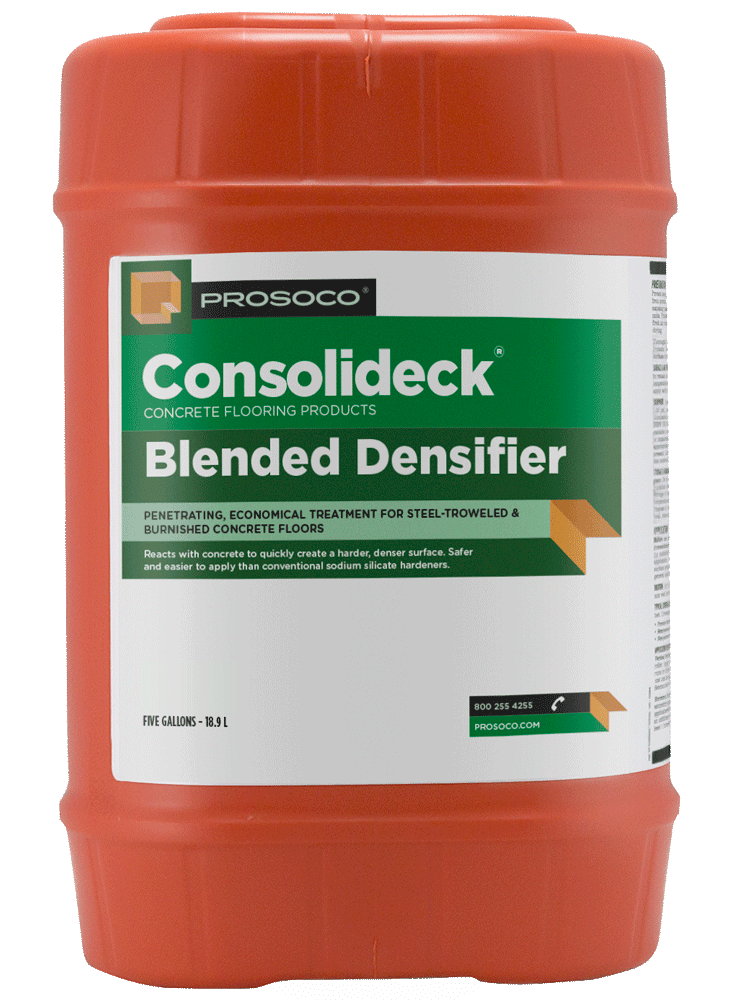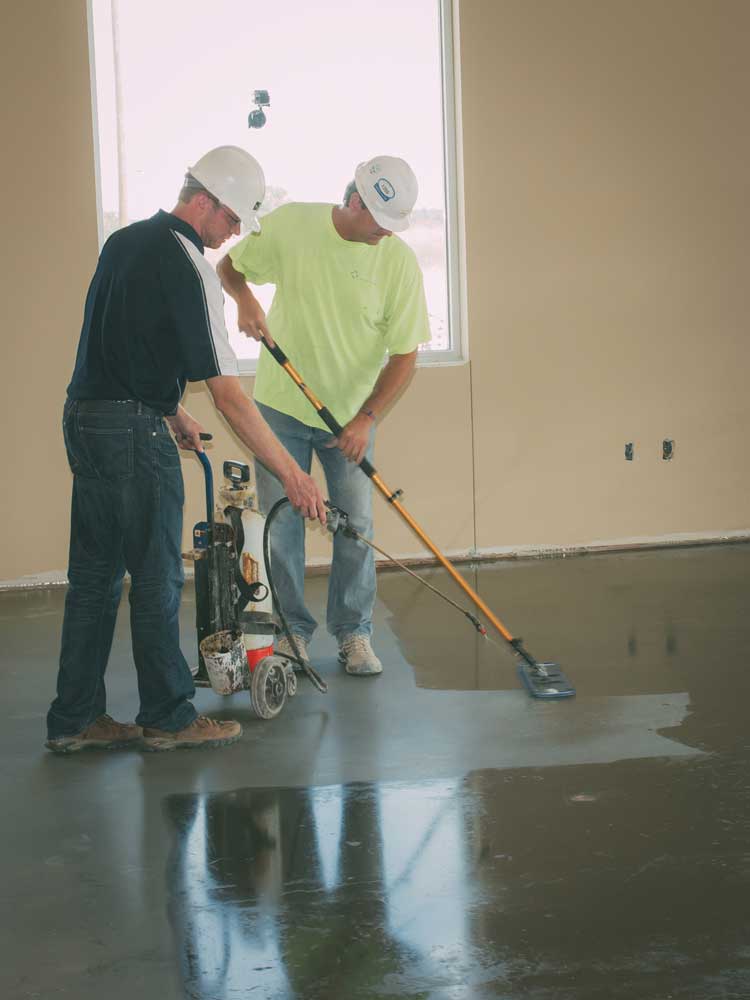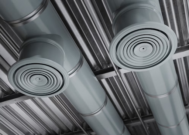How and When to Apply Concrete Densifier


Brian Jeffries
Brian Jeffries, a seasoned BPA Advisor. Brian is dedicated to sharing his wealth of knowledge on construction projects and materials. With a focus on architecture and building envelopes, Brian contributes valuable insights that shape the discourse around innovative construction practices and materials.
Concrete has become quite trendy in recent years as a fashionable and long-lasting flooring option. Modern concrete floors offer a wide range of gorgeous finishing possibilities, making them completely personalized.
In actuality, numerous stains, hues, and textures are available for concrete floors nowadays. Thanks to these advances in technology, concrete floors will look stunning with the right surface preparation and finishing. — enter the concrete densifier.
A liquid chemical called a concrete densifier is applied uniformly throughout the floor and penetrates the top layer of concrete. Similar to how water fills the pores of a sponge, its function is to fill the porous holes created by water evaporation during the curing process.
Why Should You Add a Densifier?
Concrete densifiers are essential for extending the lifespan of your concrete and ought to be a mainstay when polishing it. To increase their toughness and durability, they penetrate through the outer layers. Concrete densifiers are essential for preventing dusting, pitting, and wear and tear and can be applied to both polished and unpolished concrete.
On polished concrete surfaces, densifiers are used to assist the concrete in order for it to take polishes better, resulting in surfaces that, over time, develop an appealing low-sheen finish. Densifiers not only improve the concrete's appearance but also make it stronger and better equipped to withstand any moisture intrusion that can later lead to rust and rebar expansion.
How Do Densifiers Work?

An identical chemical reaction occurs with each type of densifier — no matter which chemical silicate compound it contains. The process causes the surface of the concrete floor to harden.
The main chemical that modifies the physical characteristics of concrete is silicate. Sodium, potassium, and lithium are the main silicates found in densifiers, functioning as a transporting agent.
The concrete's calcium carbonate reacts with the densifier when it is added. Crystals, calcium silicate, are created due to the densifier's reaction. The calcium silicate crystals form on the surface pores of the poured concrete.
The calcium silicate substance strengthens the surface of the concrete. Lithium carbonate is the reaction's by-product when a lithium densifier is used. Likewise, sodium and potassium carbonate are the by-products of sodium or potassium densifiers. The chemical or physical characteristics of the concrete are unaffected by these by-products.
How Do You Apply a Densifier?

No "one size fits all" solution exists because every concrete is unique. Similar to sodium silicates, potassium silicate hardeners are applied to surfaces. Basically, you flood the area before scrubbing the solution into the concrete. On the other hand, colloidal silicas are applied using a sprayer and a microfiber applicator, more like lithium silicates.
Many specialists in concrete consider lithium silicate a "default" densifier. They view it as being simple to apply because it requires little stimulation to penetrate. But no matter which type of densifier you use, knowing and comprehending concrete and paying attention are the keys to a successful application.
The applicator's judgment of absorption and how much substance to introduce into the concrete is crucial. The first 10 minutes are the most important since you can see if the concrete will absorb water or not during this time. If it isn't absorbing, you can either add more densifiers or wait a little longer to see if it does. If there is still enough on the surface, you don't take any action.
When to Apply a Densifier
There is broad consensus regarding the usage of concrete densifiers in project applications. The inclusion of a chemical concrete densifier will help any application of polished concrete. Polished concrete surfaces have become standard in retail, commercial, industrial, and institutional settings. They are even starting to find a home in residential spaces where sustainability is a top concern.
Densifiers can be used on any type of concrete, whether it is new or old, on interior or external concrete surfaces. Concrete that has already been installed should always be thoroughly cleaned and free of any coatings, including sealants and paint. However, there is some disagreement among manufacturers and opinions regarding how soon densifiers should be put into new concrete.
There is no doubt that the most advantageous densification occurs with well-cured concrete, probably in the 14–28-day range, where sufficient hydration has occurred, translating to more calcium hydroxide and more chemical reactions.
However, depending on the mix design, applying densifiers to freshly poured, brand-new concrete still has a number of advantages in terms of early protection of a new, spotless slab. Densifiers can start working to preserve the slab, avoiding staining and discoloration as well as damage brought on by the ongoing building processes once fresh concrete has reached its final finish and set.
Ultimately, for best results, following the densifier's manufacturer's instructions is always the best bet for excellent results.
Densifiers to Try
Blended Densifier: For the treatment of steel-troweled and polished concrete floors, there is a blend of silicates called Blended Densifier that is an economical choice. The Blended Densifier is made specifically to harden and densify concrete floors finished in this manner. Quickly reacting with the concrete, Blended Densifier hardens, strengthens, and makes floors simpler to maintain. For a rapid sheen, burnishing is also an option.
LS/CS: LS/CS is a reactive silicate hardener, densifier, and dust proofer for concrete flatwork. It doesn't need to be washed or flushed as traditional hardeners do. LS/CS should be sprayed on the surface and then spread with a microfiber pad. You don't have to worry about triggering a surface alkali silicate reaction with LS/CS, and it can dustproof floors of any age — green or existing!
DensiKure: A one-step densifier and curing agent. DensiKure cures even newly poured concrete to a smooth finish in just one application. The product is easily applied with a pump-up sprayer, and it can dry in around an hour. You get a high-performance densifier and hardener all in one.
First Cut with Densifier: If you want to grind and densify floors in one easy step, First Cut with Densifier is for you. You can make power-trowel and wet-grind jobs more efficient while increasing speed as well. You no longer have to wait hours for the concrete floors to be clean or dry. You can wet-grind up to 40% faster!
Get Smarter About Building Products
Join 50,000+ subscribers and get our 3 min daily newsletter on what matters in the building materials industry.
You might like this


Solving Ventilation Challenges: Metal Deck Profiles and Back Draft Dampers as Key Solutions
When it comes to building design and construction, ventilation is a critical factor that often presents significant challenges. Proper ventilation is essential for maintaining indoor air quality, controlling temperature, and ensuring occupant comfort and safety. In this article, we will explore how metal deck profiles and back draft dampers are key solutions for addressing ventilation […]


The Ultimate Guide to Home Insulation
When it comes to creating a comfortable and energy-efficient home, insulation plays a pivotal role. Proper insulation helps regulate indoor temperatures, reduces energy consumption, and enhances overall comfort. In this comprehensive guide, we’ll explore various aspects of home insulation, including the best types of insulation for different areas of your home and key considerations for […]


The Best Hidden Deck Fasteners: Concealed Elegance and Lasting Stability
Decks, those quintessential outdoor havens, serve as extensions of our living spaces, inviting us to bask in the open air. But what if we could take this experience to the next level? Enter concealed deck fasteners, the unsung heroes that elevate your deck’s appearance and structural integrity, all while keeping their existence a secret. In […]